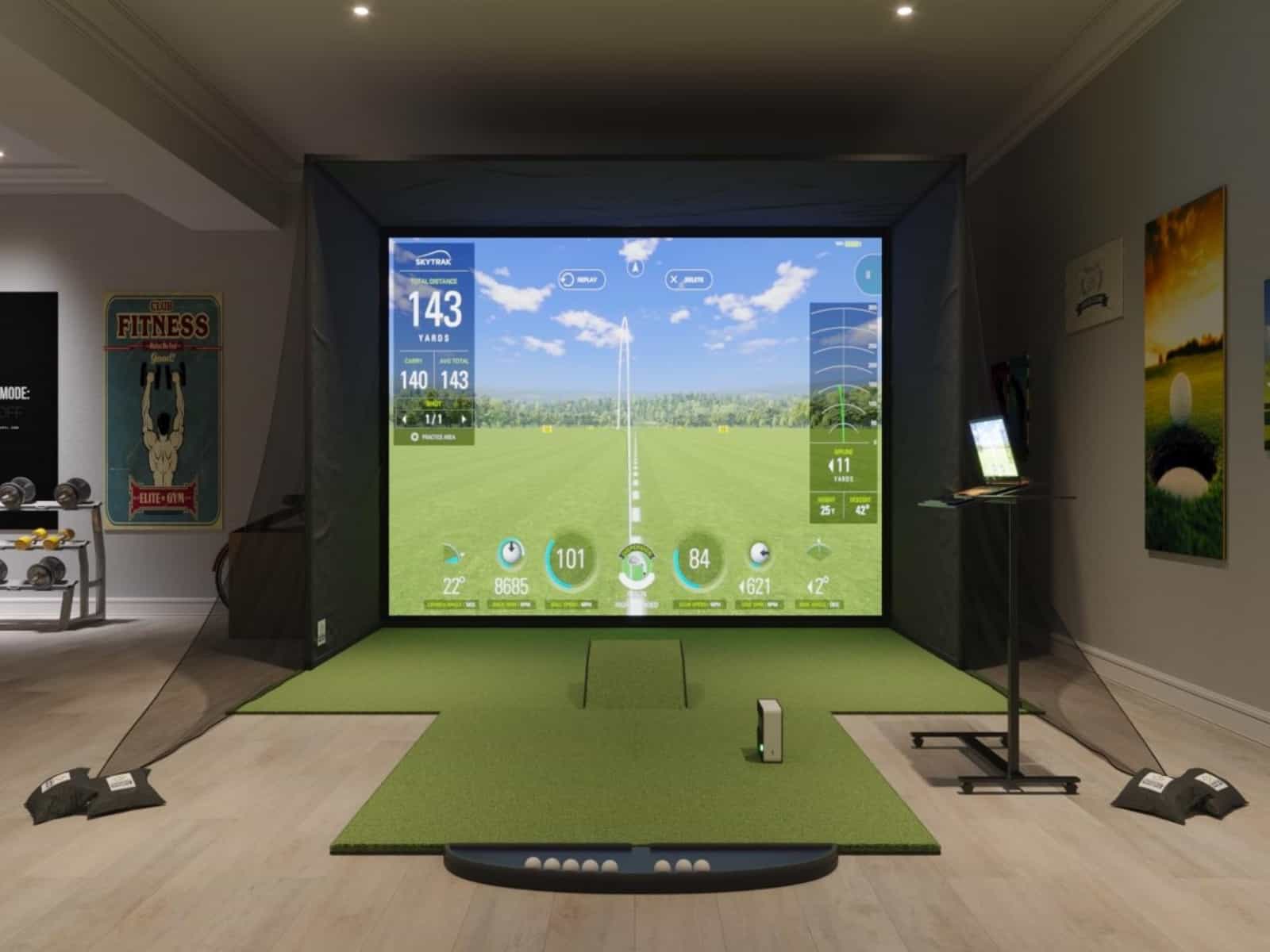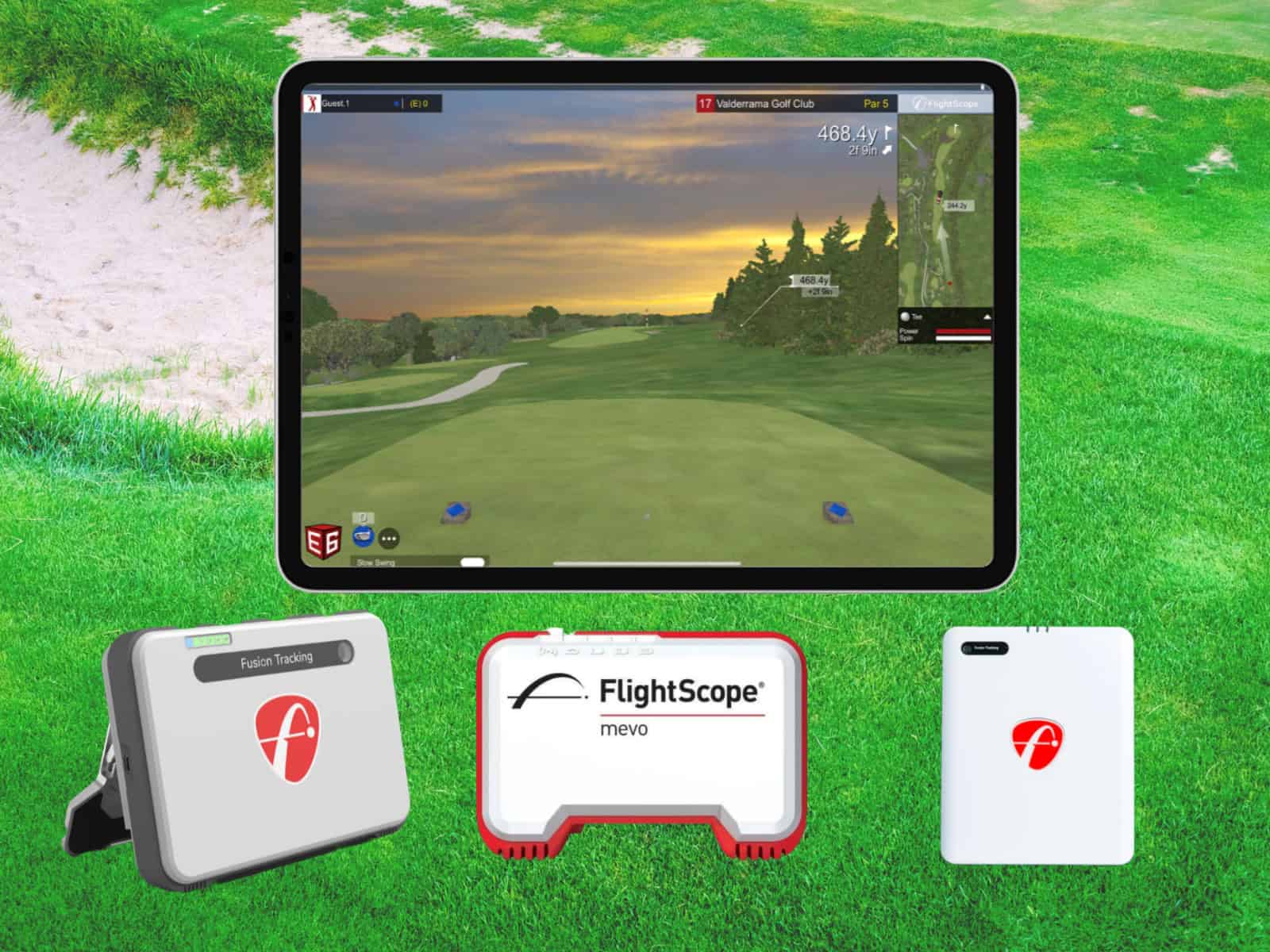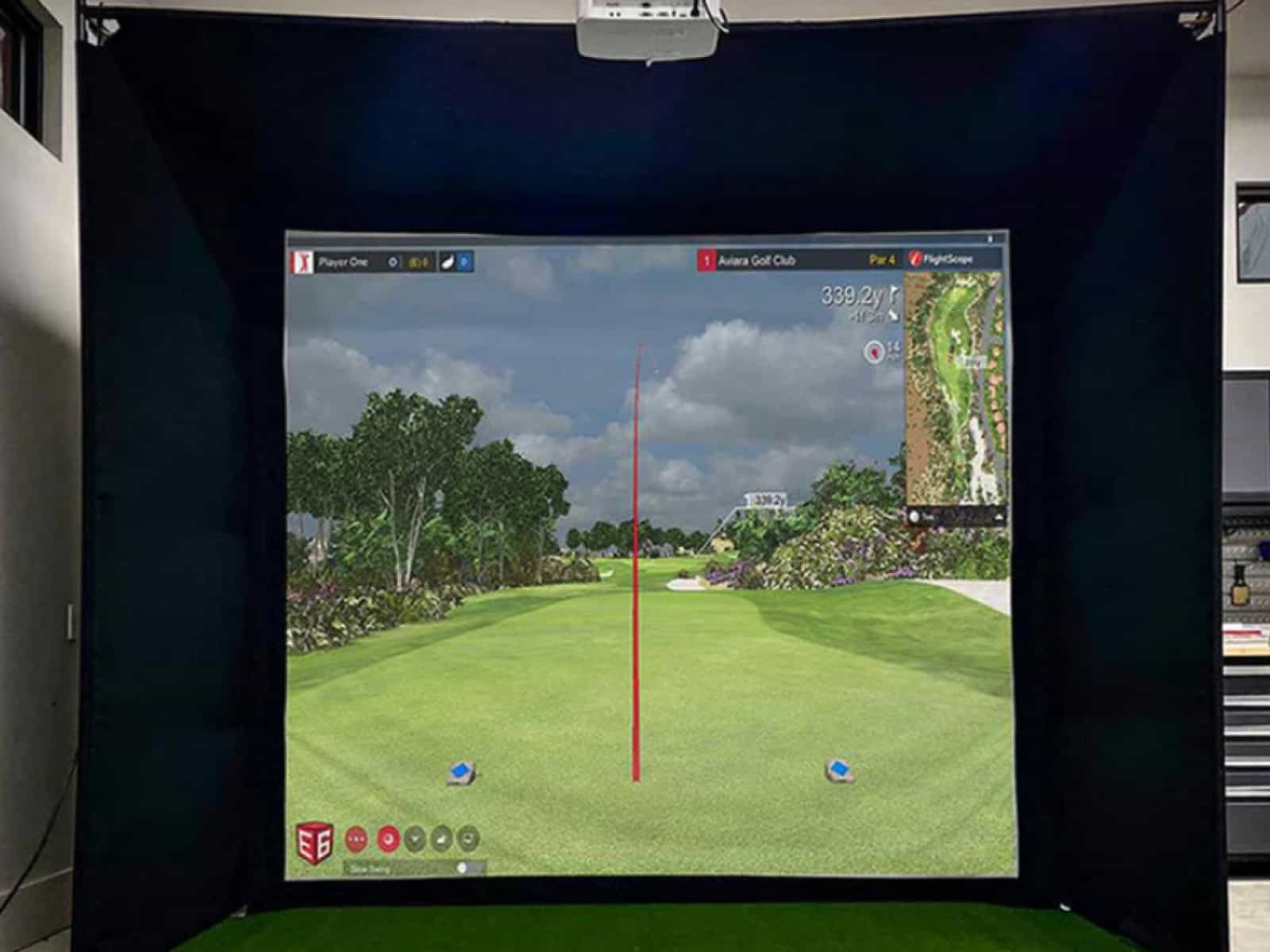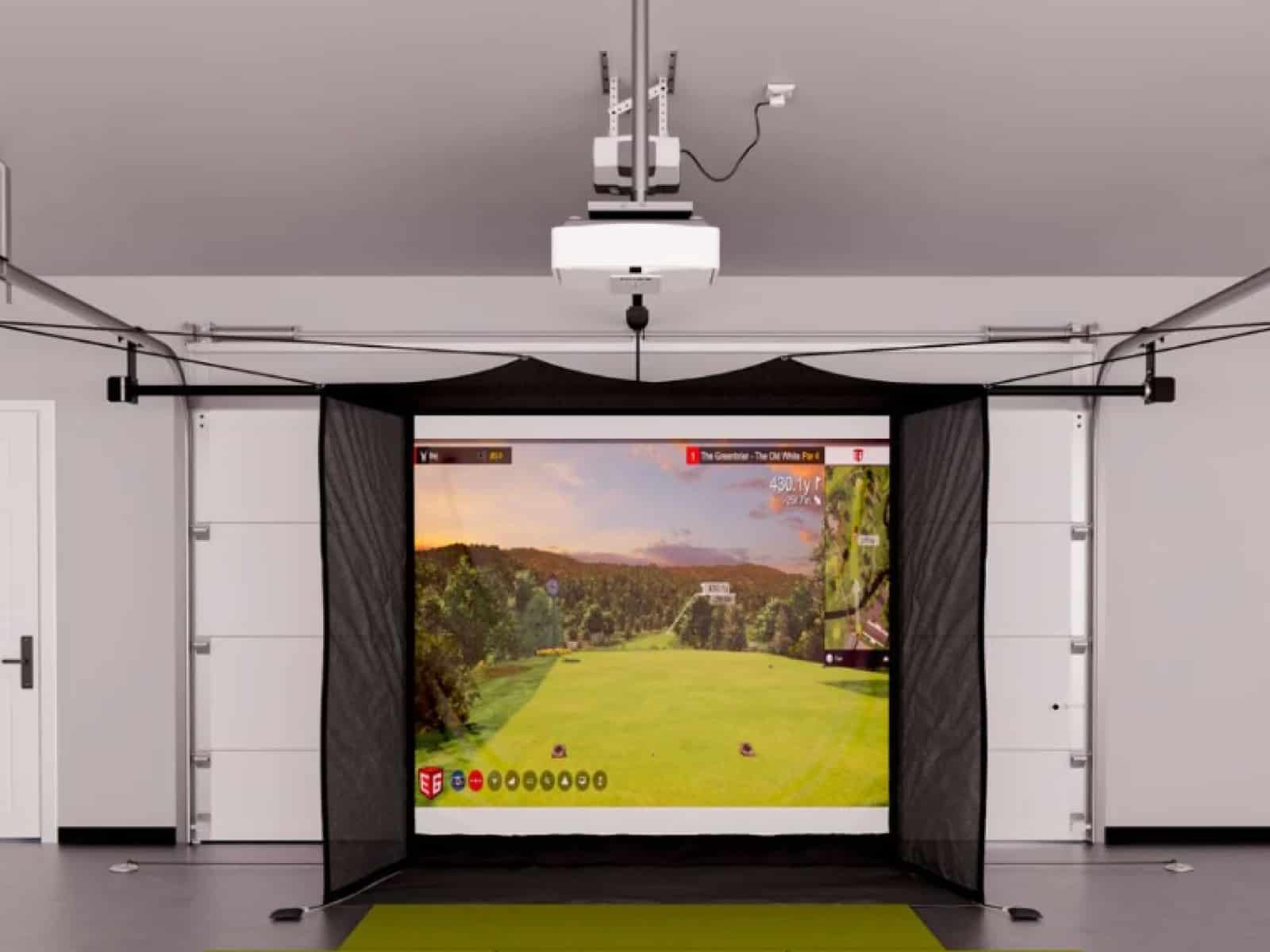In recent years, an increasing number of golfers have invested in equipment and technology that enables them to practice at home. This typically took the form of a golf net, allowing golfers to hit balls whenever they pleased. Some individuals went even further by purchasing technology that allows them to replicate golf in their house or backyard.
Golf simulators are state-of-the-art technology that creates a similar atmosphere as natural golf. It uses a complex computer model that simulates the whole game in realistic 3D models.
Keep reading to know everything there is to know about golf simulators and how they work!
Purpose of Golf Simulators
Golf simulators allow you to play golf on regulated grounds at any time, in any location, and regardless of the weather. They have become a common activity among golfers. An amateur or professional golfer can use a golf simulator to practice, record, and analyze their performance with the entire bag, from driver to putter.
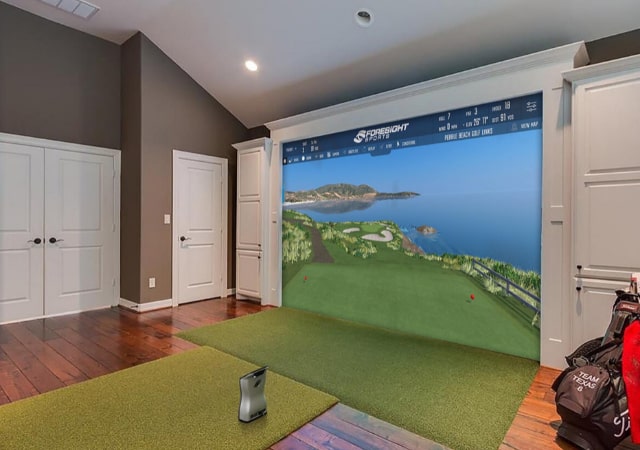
Golf simulators provide you with the opportunity to play a number of world-class virtual golf courses, such as Augusta National, Pebble Beach and Muirfield Village, that you may not have the time or money to play in real life. These software simulations include grass, trees, and other vegetation to imitate the experience of playing on a real course. Accurate depictions of the courses on the screen enhance the authenticity.
Numerous golf simulator packages, such as QED Ignite, FSX Play, E6 Connect, and The Golf Club 2019, include ultra-realistic graphics. In our opinion, it is only a matter of time before augmented reality golf simulator systems become available.
Composition of Golf Simulators
Golf simulators are created with a combination of hardware and software. There are cameras, radars, and optical sensors, as well as hitting mats and screens, golf simulator projector and screen enclosures, netting, and sound systems, among other components.
The software generates a virtual golf shot using statistics such as ball speed, club speed, clubface angle, trajectory, spin, and horizontal & vertical launch angles.
Alternatively, you can examine your data in the form of instant feedback provided by the software using simple spreadsheets or modest software packages that provide figures and charts. These metrics are tracked and recorded by the golf launch monitor.
Different Types of Golf Simulators
Top-notch golf simulators analyze strokes and use data to replicate what happens after they hit the screen or net. In addition, these data give golfers a bigger perspective of their shots and help them know what they are doing right or wrong.
Information provided to golfers improves as technology advances. There are three primary types of technology in a golf simulator. We will examine photometric, radar, and infrared sensors in greater detail to give you a clearer picture of their functions and capabilities.
Please note that some high-end golf sims combine different technologies to achieve the best possible degree of detection accuracy. Also, the golf launch monitor is the component responsible for tracking the data to provide the basis for the simulation software to simulate your shots.
Photometric
Some golf simulators employ photometric technology, which utilizes a camera system to track the trajectory of your clubhead and ball. As the ball races toward the screen, high-speed images are captured. Images of your ball’s trajectory can then be utilized to determine its spin, speed, and angle, among other things.
The camera system can help you forecast where the ball will land in the simulator if you know how it travels after your shot. This kind of feedback is crucial for pointing out areas where a golfer’s game can be improved.
Foresight Sports’ GC2, Uneekor EYE XO, QED, and SkyTrak+ are examples of stereoscopic systems under a photometric system. The ball is photographed at two different angles at high speed and then combined to obtain the most accurate measurements.
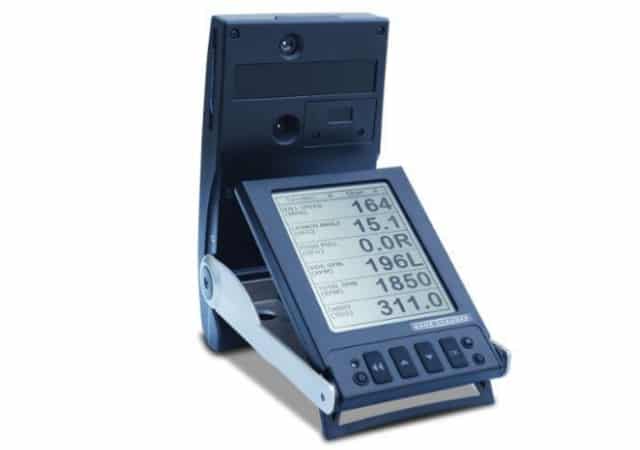
It’s possible to get even more precise measurements by using triscopic and quadrascopic systems, which employ three and four cameras, respectively. The GC3 and GCQuad provide good examples of this. Other triscopic systems, using a triple-camera setup, include the Bushnell Launch Pro and the EYE XO 2.
Another quadrascopic system is the excellent HD Golf Ultimate Entertainment Package, which uses a minimum of four cameras to track all the details of your swing and ball flight path. More cameras can be added to the mix for an even more accurate and immersive experience. However, this is a high-tech system that costs a lot of money.
Infrared
Another common simulator technology is infrared.
The simulator sends out a light signal to track the movement of the clubhead as you make your swing. In the event that a golfer is adjusting their swing, they are given feedback on their technique in order to help them do so the following time around.
It is safe to say that the OptiShot 2 infrared simulator system is the most widely known on the market. Additionally, Foresight Sports GC systems have certain infrared object-tracking capabilities. The same goes for Uneekor’s QED and EYE XO systems.
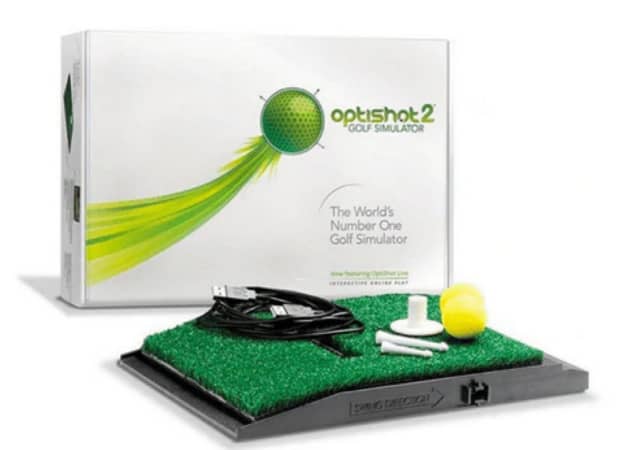
Radar
Microwaves are used by radar technology in golf simulators to track the ball’s movement. Signals are exchanged between the simulator and the ball in order to keep track of its position and speed. The FlightScope Mevo+, Garmin Approach R10, FlightScope X3C, Full Swing Kit, and TrackMan are some of the most popular radar-based golf launch monitors/ simulators.
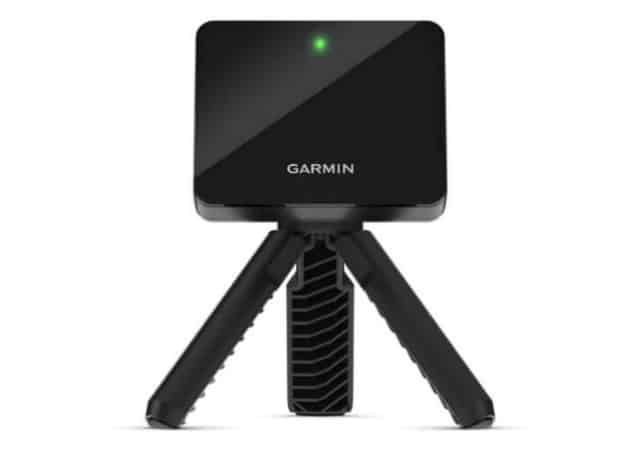
The Doppler effect can be used to calculate direction with this technology, although it usually necessitates a longer distance for a more accurate reading. Therefore, radar-based golf simulators are best for outdoor use, although some may still work indoors in bigger venues due to their indoor-outdoor adaptability.
Again, some of those systems combine more than one tracking technology, as is the case with Trackman and the Flightscope X3C and Mevo Plus, which all combine Radar and camera tracking; something Flightscope calls Fusion Tracking, while Trackman uses the company’s patented Optically Enhanced Radar Tracking system (OERT).
How Do Golf Simulators Work?
Golf simulators allow players to simulate a real-world golf experience in a virtual environment. This is to enable a golfer to examine their swing, work on deficiencies, and improve without having to head to the golf course.
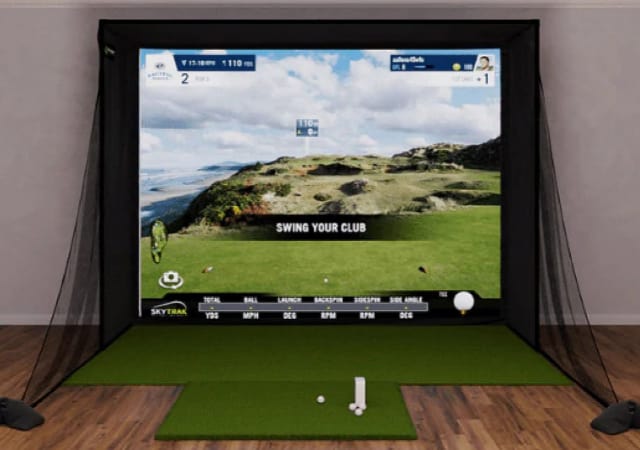
The home and indoor golf sets allow golfers to play in different locations for as long as they like. There are some pricey packages, such as HD Golf’s or the type Tiger Woods has in his home – The Full Swing Pro Series, but they are fantastic pieces of technology and can be custom-built to your desire for the optimum experience.
Golf simulators provide all levels of golfers with an opportunity to practice more regularly and effectively. The ease of simulators combined with the rapid and accurate feedback offered on each shot help golfers to see what they are doing right and wrong and better understand their swing.
Process
The simulator processes shots and swing data. After the data have been analyzed, a projected outcome is generated. The CPU receives this information from sensors and cameras, radar or infrared depending on the technology. A powerful projector impact screen, on the other hand, is used to display the processed data.
Capturing, processing, and delivering data can be broken down into the following three steps:
1. Taking Input
Like any other digital instrument, a golf simulator relies on data input. Some simulators feature a military-grade radar and a wide array of light sensors, motion sensors, and motion detectors. Every swing and other function will be recorded by the simulator, thanks to the aforementioned data collectors.
The crucial component here is the launch monitor; Optishot, on the other hand, doesn’t use a monitor per se, but relies on a sensor mat with two rows of Infrared sensors to detect your club’s movement.
2. Processing of Data and Analysis
Data is processed by the simulator processor, or computer after sensors and other input devices have been used. The swing’s details and other functions are determined by a computer application that is installed on the computer. Consideration will be given to factors such as clubhead speed, face angle, contact, tempo, etc.
3. Delivering Output
Using the tracking system, the program determines where the ball should land, and this data is subsequently projected on the impact screen along with the visuals.
The virtual output mimics what would happen and what your shot and ball flight characteristics would be if you were actually playing a real golf game on the course or driving range.
Golf Simulator Putting Technology
If you intend to spend a significant amount of time playing on your golf simulator, you must practice putting. In fact, it turns out that measuring putting is a little more difficult.
The good news is that a golf simulator allows you to putt in a variety of ways. To begin, you can putt a real golf ball as you utilize the sensor. Other options include using an auto-putter. If you want more time to work on your driving and longer shots, you can consider using an automatic putter.
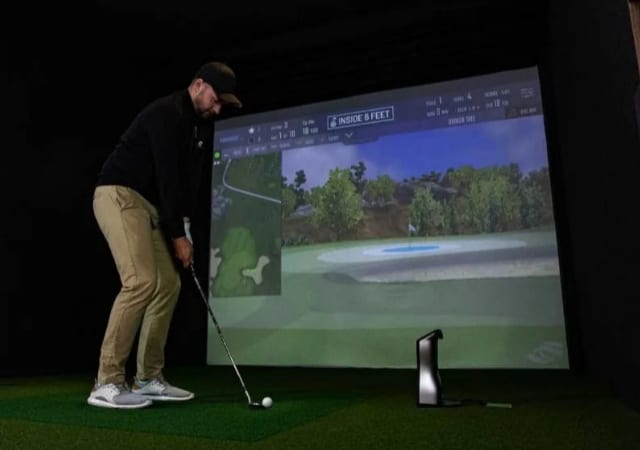
You can also estimate the number of putts required. Alternatively, you can install a separate putting green, place the ball suitably, putt it, and then record the data. To improve your short game, you may need an additional putting green to work on your technique.
This doesn’t mean you should forget about your short game because teeing off and driving are important aspects of the game of golf. Slope, speed, and distance can all be practiced with a simulator to track your putting data.
Some companies have dedicated software to putting and short game practice. For example, the Foresight GCQuad and GC3 can be purchased with a putting analysis addon. Flightscope’s X3C provides a long list of putting metrics and Uneekor’s QED and EYE XO units all have putting analysis capabilities and software.
Moreover, there are sims exclusively dedicated to putting practice, like the excellent and affordable ExPutt Real-Time Putting Simulator (which can even be used as your separate putting area along with your actual system).
Parameters Measured by Golf Simulators
Golf is a strategic and physics-based game. The way you swing the club, the angle at which you hit the ball, and other factors can indicate what is the best for your game. There are a few things you need to know before using a golf simulator to get the most out of it.
For instance, FlightScope’s claim that the X3C measures more than 50 data parameters is accurate, but it relies on differentiating the data points shared by full shots, chipping, and putting.
Please note that we are using the X3C as a reference here because it is one of the launch monitors that provide the highest number of metrics.
Full Swing & Ball Flight data includes the following [1]:
- Ball Speed
- Club Head Speed
- Smash Factor
- Carry Distance
- Launch Angle
- Spin Rate
- Apex Height
- Flight Time
- Club Speed Profile
- Club Acceleration Profile
- Angle of Attack
- Spin Loft
- Launch Direction
- Spin Axis
- Roll Distance
- Total Distance
- Lateral Landing
- Shot Dispersion
- Shot Type
- Skills Distance to Pin
- Skills Score
- Face to Path
- Face to Target
- Club Path
- Vertical Swing Plane
- Horizontal Swing Plane
- Low Point
- Vertical Descent Angle
- Curve
In addition, the data for Chipping & Putting includes the following:
- Club Path
- Club Face Angle
- Launch Speed
- Launch Direction
- Total Distance
- Distance to Pin
- Lateral Position
- Club Head Speed
- Smash Factor
- In Miss Range
- Skid Distance
- Roll Distance
Based on the brands and packages, many golf simulators provide varying numbers of categories and results.
Frequently Asked Questions
The following are some frequently asked questions regarding golf simulators.
Are Golf Simulators Accurate?
Golf simulators are accurate if they can be made to be. Most of them are supported by technology that has undergone extensive testing and is proven to be dependable. Countless tour and teaching professionals throughout the world rely on this technology.
If you operate your golf simulator on high-quality equipment, you can expect an accuracy of 85-90 percent. Make sure your simulator is set up properly first, and then concentrate on your swing. Your simulator will be 90-95 percent accurate as a result of this.
How Much Does a Golf Simulator Cost?
In terms of price and quality, golf simulators range widely. There are both high-end and low-cost simulators available for purchase. A simulator can cost around $1,000, but it can cost as much as $70,000 or more.
Don’t be concerned about the cost. You’ll be able to use the greatest simulators in your price range. If you’re interested, you can check this guide to see if golf simulators are worth it.
What Space Do You Need for a Golf Simulator?
A golf simulator will not work in every location. The recommended dimensions are 12 feet long, 10 feet wide, and 9 feet high, which is the space where most simulator packages can be installed in. Ceiling height is the most common constraint for most people. Is there a way to tell how much space you have? Backswing slowly and observe whether the golf club strikes the ceiling. If that happens, you’ll need a higher ceiling or you may limit yourself to practice with shorter clubs.
Basements and garages are excellent venues for an indoor golf simulator. Many simulators are portable and can be put up and taken down in a matter of minutes. Of course, there are permanent projector solutions for permanent setup as well.
It’s important to select a setup that works for you when using golf simulators. For some players, golf nets are a viable alternative to golf simulators and projectors. You can then see the data and simulation on a tablet or other display device after you hit a golf ball into the net.
Conclusion
In response to the question of whether golf simulators may improve your game, the answer is a definite yes! Golf simulators will unquestionably improve your game if you train regularly with a simulator and give it your whole attention. And you can quickly cut your golf course trip expenses. You can also save time and thereby enhance your performance.
You can expect the next best thing to be on the golf course with any golf simulator experience.
References:
- Trust the unmatched accuracy: FlightScope X3C. FlightScope. Retrieved from https://flightscope.com/products/flightscope-x3c


